How and when to see the gegenschein, cousin of the zodiacal light and one of the greatest night sky naked-eye challenges.
Tell someone they can see the gegenschein at their dark-sky site and you'll probably be met with disbelief. But as with many celestial sights, it's easier to see than you'd think — if you know what to look for and when.
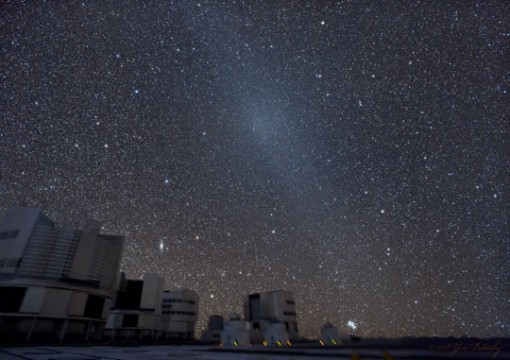
ESO / Yuri Beletsky
First off, how do you pronounce that word anyway? It's GAY-gen-shine, the German word for "counter-shine." The gegenschein is a faint, diffuse brightening along the ecliptic directly opposite or counter the Sun. At local midnight (1 a.m. Daylight-Saving Time), the counterglow appears as a round to oval patch of light about 8-10° across within the zodiac constellation crossing the southern meridian at that time. You can see it an hour or two earlier or later, but it's highest and easiest to spot during the midnight hour.
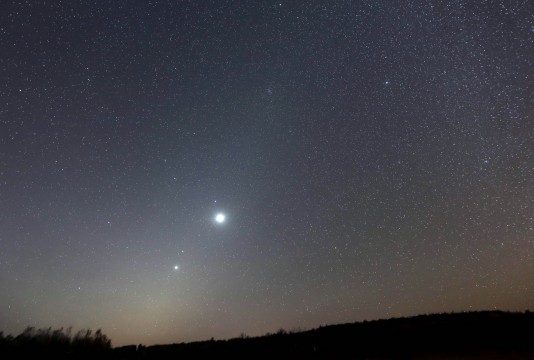
Bob King
As with its brighter cousin the zodiacal light, we're seeing sunlight reflecting off dust ejected by comets and released during asteroid crackups. The greater part of it is concentrated in the plane of the solar system, the reason both phenomena are centered on the ecliptic, home to the planets, Moon, and Sun. Sunlight scattered forward off dust in the direction of the Sun creates the zodiacal light. Back-scattered light from dust directly opposite the Sun toward the asteroid belt gives us the gegenschein.
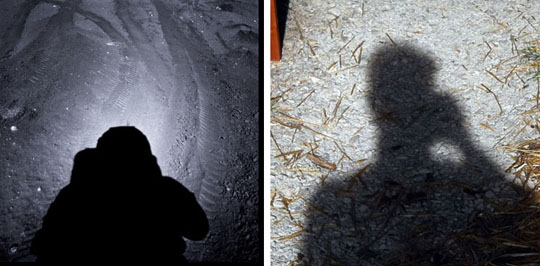
NASA / Bob King
Since the gegenschein lies opposite the Sun, much like a full Moon or planet at opposition, sunlight strikes the dust particles square on. All the tiny shadows cast are hidden behind each and every grain so they don’t subtract from the belt’s brightness, creating a brighter spot in the sky. The Moon experiences a similar "bump" in brightness at the time of full phase. Astronomers call it the opposition effect. We also see the same phenomenon as a halo of light around our heads when looking at smooth or regularly-textured ground with the Sun at our back.
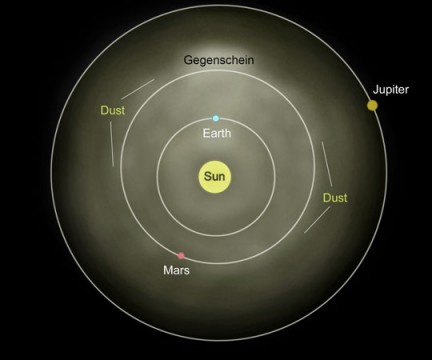
Bob King
From the darkest sites you can actually "see" the path of the ecliptic as the hazy, zodiacal band, a much fainter extension of the both the zodiacal light and gegenschein that wraps all the way around the sky. Twenty miles north of my home in Duluth, Minnesota, the counterglow is plainly visible on moonless, transparent nights during the fall and spring. And that's with the southwestern sky aglow with city light pollution. On the best nights, I've been able to trace a 50° segment of the fainter zodiacal band. If I can see it with my old-guy eyes, you can, too.
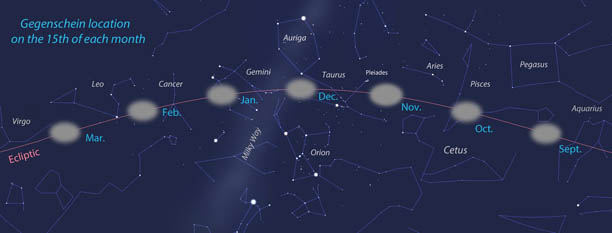
To be successful, your eyes need to be fully dark adapted and the southern sky should be as free of light pollution as possible. For mid-northern observers, there are two peak viewing seasons: October–November and February–March. At these times, the gegenschein is relatively high in the sky and little hindered by atmospheric absorption. If you can see the weak glow of the Milky Way in Taurus, you should be able to make out the gegenschein, which is similarly dim.
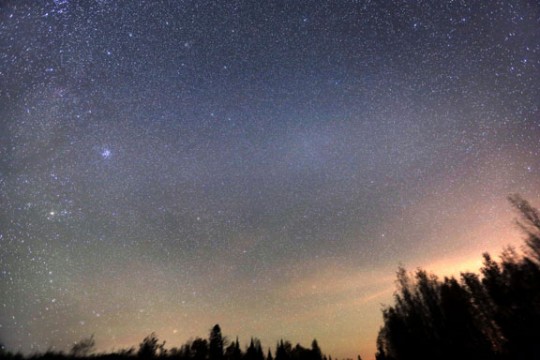
Bob King
Check the calendar and look up at the appropriate spot along the zodiac for a very diffuse, puffy smudge larger than you might imagine — nearly one outstretched fist (10°) across. Play your eye around the spot using the same averted vision technique you'd employ to eke out detail on a deep-sky object through the telescope. Trust your gut if you think you see it then look again in an hour. Has it moved westward with the stars? Yes? Congratulations!
Look again another night and then another until your familiarity with the counterglow's appearance becomes second nature.
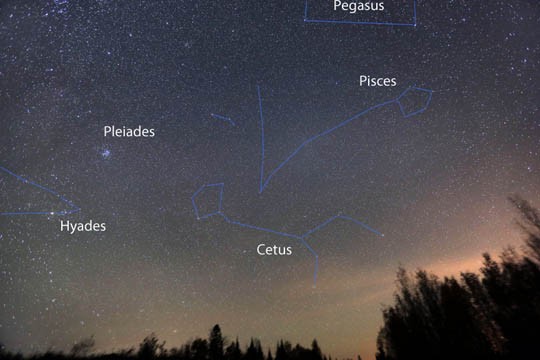
Bob King
Several nights ago, I estimated the gegenschein's diameter at nearly 10° with "wings" of fainter zodiacal band extending from either side toward the Pleiades and Aquarius like a giant ghostly Band-Aid.
You might think that December and January would make for best viewing, when the counterglow peaks in altitude, but the Milky Way gets in the way, making it extremely difficult to tell the two apart. The best viewing window this season continues through about October 20 then opens again from November 4–20. Remember that the gegenschein reaches peak altitude at 1 a.m. local daylight time (which ends in the U.S. and Canada at 2 a.m. November 1, 2015) or midnight local standard time.
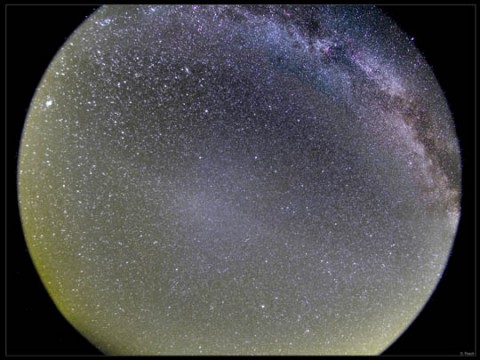
Damian Peach
Good luck in your gegenschein quest. I love the thought of the Sun far below my feet at midnight and knowing that Earth's shadow, which easily covers the full Moon at its opposition point, can't touch the enormity of the interplanetary dust cloud facing us at the midnight hour. Such a strangely inspiring sight.
I'd be remiss without one last mention of the zodiacal light, which, like the gegenschein, is on best display this month and next. And how can you pass up the sight of three bright planets — Venus, Mars, and Jupiter — nestled within its fuzzy glow? Look east for a large, rightward-leaning column of hazy light starting about 2 hours before sunrise now through about October 25.
No matter what your schedule, there's plenty of cosmic dust for everyone.
 10
10








Comments
Gerald-Hanner
October 14, 2015 at 2:10 pm
I thought the word gegenschein was wrong since schein translates to certificate.
It appears that the correct term is gegensinn. http://dictionary.reverso.net/german-english/gegenschein
You must be logged in to post a comment.
Bob KingPost Author
October 14, 2015 at 3:05 pm
GH,
That's strange because that's how it's spelled in English with 'schein' referenced as either shine or glow. The German verb 'scheinen' means to 'shine' or 'to seem'. That would appear to be the root of the word gegenschein.
You must be logged in to post a comment.
Christian
October 14, 2015 at 9:00 pm
Gegenschein is correct. Schein can mean either certificate or shine. For example the headlights on a car are called Scheinwerfer "shine thrower" in German.
You must be logged in to post a comment.
Christian
October 14, 2015 at 9:33 pm
If Gegenschein is the reflection off dust opposite from the direction of the sun, then I assume the photo of Venus, Mars, and Jupiter does not actually show the Gegenschein since they are much closer to the sun at this time. The last line of the caption of that photo should be corrected.
You must be logged in to post a comment.
Bob KingPost Author
October 15, 2015 at 1:32 am
Christian,
My slip - thanks! Of course, it's the zodiacal light. Thanks for pointing that out, I appreciate it. Corrected now.
You must be logged in to post a comment.
Ernie Ostuno
October 16, 2015 at 5:38 am
I saw it last night from Allegan County, Michigan. It was barely visible, but it was in the right spot in Pisces as shown on the map. Without the map I would not have seen it. I also saw Comet PANSTARRS C/2014 S2 through a telescope, and estimated it to be about magnitude 11.0 to 11.5.
You must be logged in to post a comment.
Tom Hoffelder
October 16, 2015 at 9:24 am
Excellent article and I absolutely agree with "strangely inspiring." I have seen it a number of times at the Okie-Tex star party which is in Sept or Oct. You can't miss it there with the Bortle Scale 1 skies of Kenton Oklahoma. But I was very surprised to see it about 7 years ago in March, only 20 miles east of Hartford CT (Bortle Scale 4.5 - 5) . And it wasn't a case of averted imagination, because I wasn't even thinking of seeing it, due to a combination of the skies and associating it with the fall. However, around midnight, I kept noticing a very dim patch of light every time I looked toward Virgo, and finally I realized that is where the gegenschein would be in March.
You must be logged in to post a comment.
Nzubenel
October 16, 2015 at 11:19 am
Thanks for writing about this subtly beautiful sunlit dust! Another aid in spotting and getting a sense of the full size of the Gegenschein on any given night is this: Move your hand at arms length back and forth across the sky in the counterglows general direction, keeping your eyes on your hand, but your attention on the sky seeming to move behind it. The size of the Gegenschein depends upon its altitude above the horizon and general sky clearness, but also upon the brightness of atmospheric airglow. On some seemingly crystal clear nights far from any source of light pollution, only the smaller, central portion of the Gegenschein can seen when the green airglow is bright, and other nights of low airglow activity it can show to be much larger.
I first read of this phenomenon in 1971, but did not see and image it until September 10, 1983 from the Flint Hills of eastern Kansas. The best view I have had, which included the Zodiacal band, was on November 17, 1985 from SE Kansas. My observing journal from that morning reads: Gegenschein was never more plainly visible - centered close to the Pleiades . . . Zodiacal band in west, and especially east of the winter Milky Way.
Some of my images of these phenomena can be seen at http://www.twanight.org/newTWAN/photos.asp?ID=3001420&Sort=Photographer http://www.atoptics.co.uk/highsky/zodim5.htm http://www.atoptics.co.uk/highsky/zodim3.htm
DZ
You must be logged in to post a comment.
james6
September 12, 2017 at 12:53 am
Good luck in your gegenschein quest. I love the thought of the Sun far below my feet at midnight and knowing that Earth's shadow, which easily covers the full Moon at its opposition point, can't touch the enormity of the interplanetary dust cloud facing us at the midnight hour. Such a strangely inspiring sight.
You must be logged in to post a comment.
Dave Mitsky
March 23, 2022 at 7:26 pm
I've seen the gegenschein a number of times and on a few occasions the even more elusive zodiacal band.
You must be logged in to post a comment.
You must be logged in to post a comment.